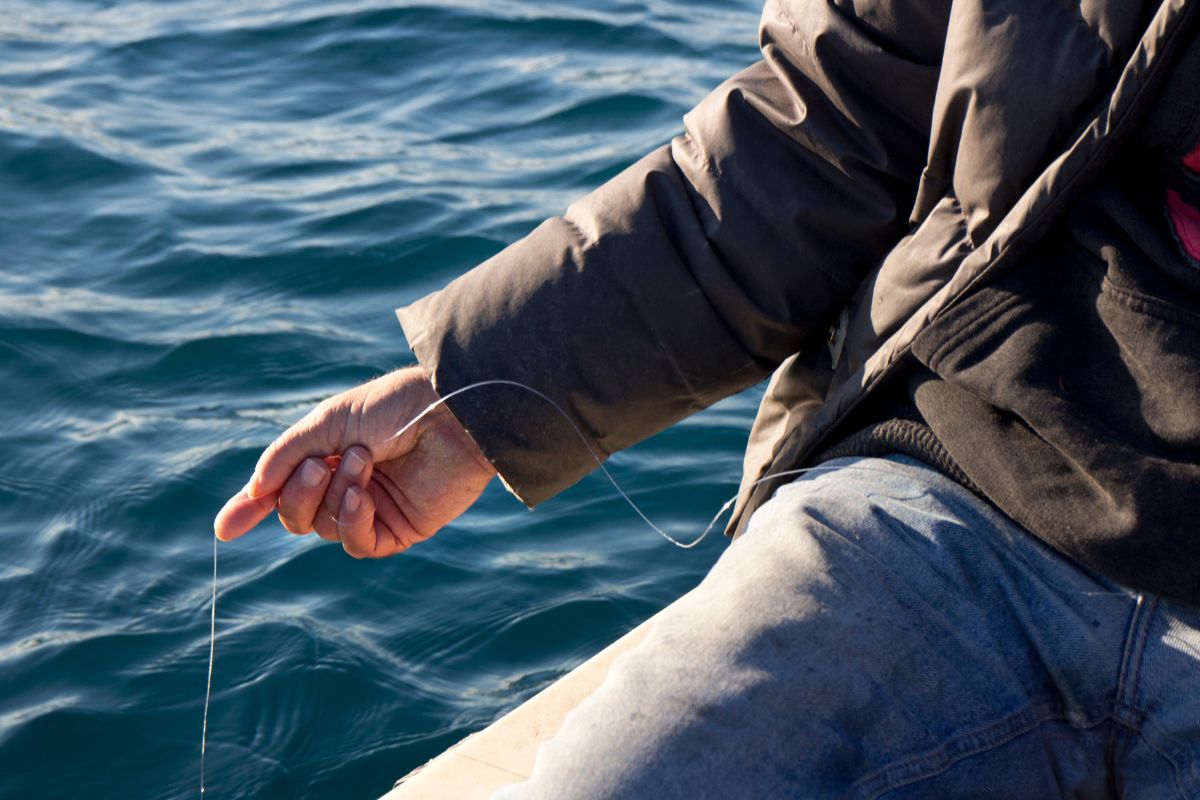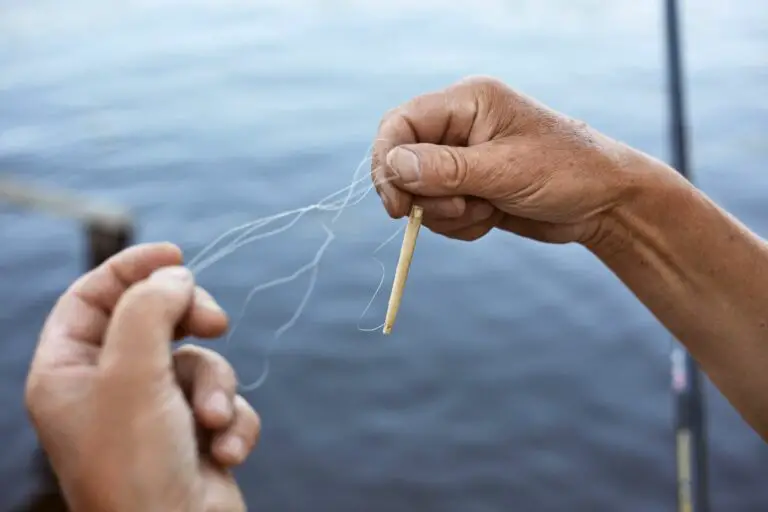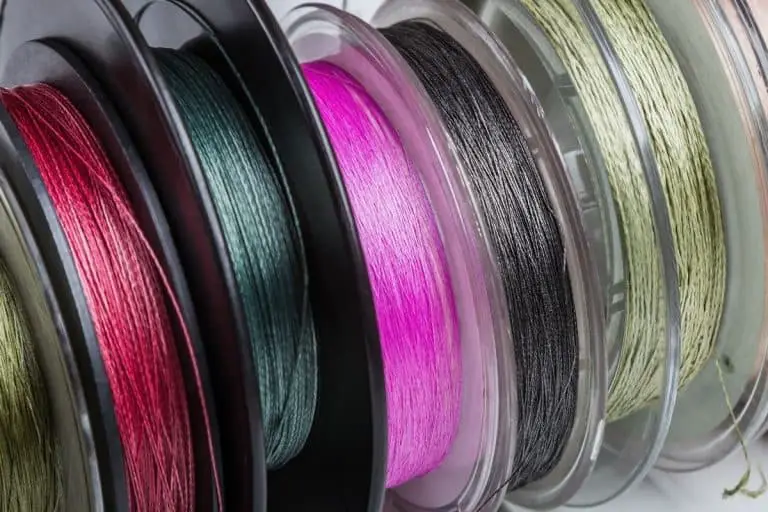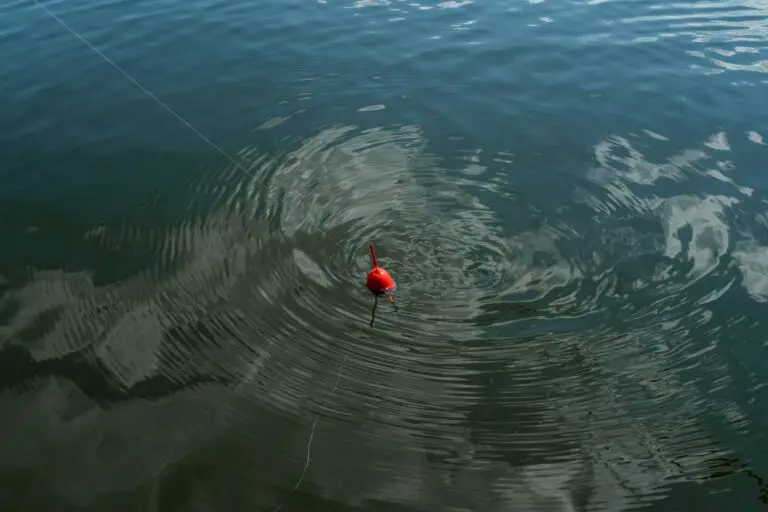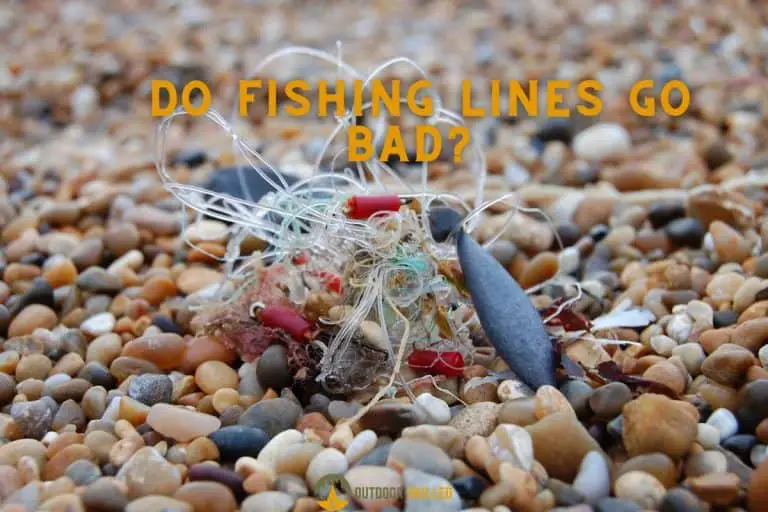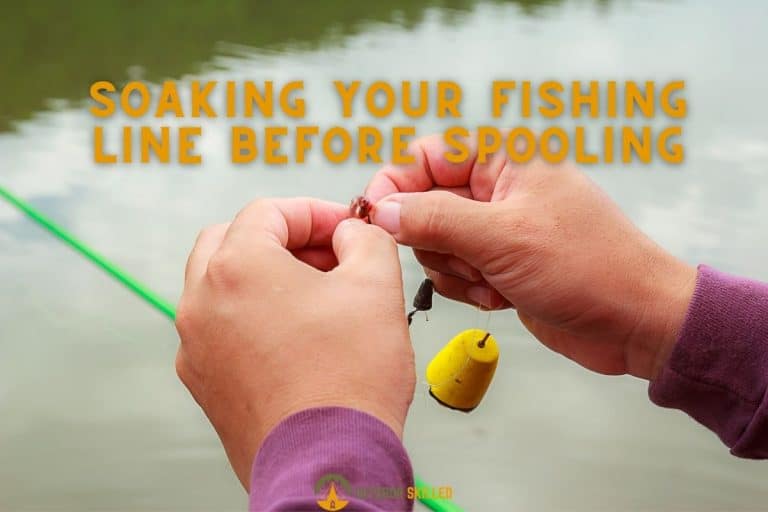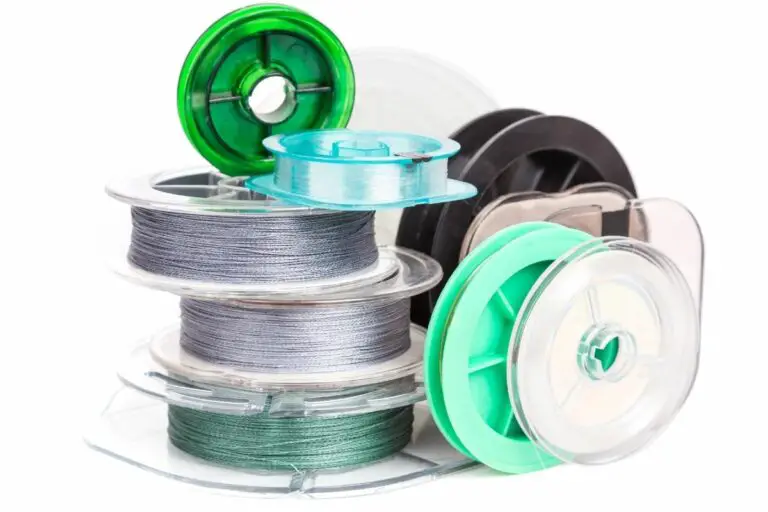Can Fishing Line Cut You? Here’s How to Stay Safe
Nothing beats a day out on the water. Fishing is a popular summer activity that can be thrilling, soothing, or whatever you would like.
However, accidents with the fishing line can occur, which might ruin the experience for you. It’s important to be prepared to avoid injuring yourself while using your fishing gear.
Can fishing line cut you? Some kinds of fishing lines, like braided lines or monofilament lines, can cut deep into the flesh and perhaps even cut off a finger if they are handled incorrectly. To avoid injury when fishing with a braided fishing line, it is recommended to use protective gloves.
Keep on reading to explore more about how a fishing line can cut you and how to prevent the fishing line from cutting you.
Table of Contents
Can Fishing Line Cut You?

When you’re out fishing, your gear might be a source of danger. Fishing lines could appear to be basic string, but if handled carelessly, they can cause injury.
There are two main factors you need to take into consideration if you want to avoid getting injured:
- Line Tension
- Line Diameter
let’s talk about each factor in more detail:
Line Tension
Fishing lines are made to handle a considerable amount of weight, so you can reel in larger catches.
However, the greater the weight of your catch is, the greater the line tension will be. As the tension in the line increases, so will the possibility of injury.
For instance, too much tension can cause your line to snap and possibly lash back at you, resulting in a deep cut. This doesn’t often happen as there won’t be enough energy in the line to lash back that hard, but it’s still a possibility.
Some anglers also try to grab the fishing line with bare hands to reel in their catch faster or to break the line.
If the line has too much tension and you attempt to grab it with your hands, it’s very likely to dig into your skin and cut you.
Line Diameter
The thickness of the line is determined by its diameter.
The thicker the line, the lower the chance of it cutting your hands. On the other hand, the thinner the line, the more likely it is to cause an injury since it will be almost as sharp as a blade.
How to Prevent the Fishing Line from Cutting You?

There are two cases where you could potentially get cut on a fishing line:
- Casting with braided fishing line
- Getting a tangled line unstuck
In these two cases, you need to guard your hands to avoid injury. So, let’s take a closer look at how you can do that:
Casting with braided fishing line
You’re likely to get injured when casting with braided lines because they have a thin diameter and they can carry a lot of weight which creates more tension.
Here are some tips to keep your fingertips safe when casting using a braided line:
Attach a Breakway Cannon to Your Rod
A breakaway cannon is a little gadget that can be attached to your fishing pole.
This is achieved by winding the line around the gadget before casting. This keeps your hands from coming into touch with the line.
To secure the line, you press down on the handle. Next, as you typically would, open the bail of your reel.
Cast your line properly at this stage, but keep your finger on the cannon leaver. Drop the leaver like usual if you weren’t using the cannon. The line will release from the cannon and begin unspooling normally.
Use Protective Gloves When Casting.
Wearing gloves is another method to safeguard your fingers while casting, particularly with a braided line.
This could take some getting accustomed to the sensation of wearing protective gear when casting, but it does the trick. Learn more about what fishermen wear on a fishing trip.
There are various gloves available you can use, but it’s recommended to avoid bulky gloves. Even though bulkier gloves may provide additional hand protection, they might increase the likelihood of the line being entangled on the glove upon release.
I recommend the gloves from BIG WORM FISHING. They are super affordable, and for the price, there really aren’t any better-made gloves out there.

Getting A Snagged Line Unstuck
It is fairly common for a line to get snagged, yet not many anglers know how to securely get a snagged line unstuck.
Injuries occur when you try to get the hook out of the snagged line by looping the line around your hand and pulling.
So, It’s best to avoid pulling on the line with your hand. Similarly, you shouldn’t pull on the line with your rod since this leads to breaking your rod.
Alternatively, consider these two easy techniques:
Wrap the Line Around A Piece of Wood
It does not have to be made of wood. It might be a fishing net handle or an oar. The aim here is to pull on the fishing line slowly while it is wrapped around anything other than your finger.
Pul The Line From The Reel
Pulling from the reel is another easy way to detangle a snag. It involves the following steps:
- Place the rod’s tip in the direction of the line.
- Reel in as much loose line as you can without bending the rod. By not bending the rod, you’ll prevent it from getting damaged.
- Pull backward on the reel.
What to Do If a Fishing Line Cut Your Hand?

Getting your finger cut by your fishing line is one of the most common problems you could face on your fishing trip, and it might ruin the whole experience for you.
Aside from the overall pain, an injury might cause you to miss out on catching a trophy fish.
So, the most important thing to do if a fishing line cuts your hand is to tape the injury immediately. This will prevent you from losing too much blood or getting an infection.
Carefully wrap 1 to 2 wraps of tape around your injury and make sure you can still move your hand freely with the tape on. If you wrap your hand too tightly, you will not be able to control your line properly.
There are various decent tape options to choose from, but cheap material should be avoided since cheap tape tends to peel off easily when wet.’
Most anglers recommend using waterproof medical tape, as it is cheap, durable, and water-resistant. Also, hockey tape is a fantastic choice as well for cuts.
While electrical tape works for some people, it is not a preferred option; however, if you do not have anything else on hand, this option will suffice.
Related Questions
How To Cast Your Line Without Injuring Your Hand?
To cast your line without injuring your hand, you need to wear protective gloves, especially if you’re using a braided line. Fishing gloves could also protect your skin from sharp hooks or fish teeth. You also need to learn how to cast your line properly.
Can Fishing Line Cut Your Finger Off?
A fishing line can sometimes cut your finger off if you are not handling it correctly or if you grab it with your bare hands. The risk of cutting off your finger will also depend on the kind of line you’re using as thinner lines are more likely to cause injury than thicker lines.
How Strong Is A Fishing Line?
Fishing line strength is measured in what’s known as the pound test. It roughly corresponds to the weight of the fish for which you are fishing. For example, use line in the 30-pound test for tuna in the 30-pound range, WHILE4-pound test line is standard when casting for trout.
Helpful Resources
Reel It In: Be Prepared for a Successful Fishing Day
These Are The Fishing Lines I Absolutely Love
- After Testing endless brands and varieties, these are the best Fluorocarbon lines, these are the best Braided lines, and these are the best monofilament fishing lines.
- These are the best Ice Fishing Lines for your money
- These are the fly fishing lines that have never let me down.
- Targeting Trout? These are the best fishing lines for trout. For Bass, use these bass fishing lines.
- Not sure which fishing line to use? Check out these comparisons:
- Going Crappie Fishing? These Crappie Fishing Lines outperform everything else (and their price!)
If you like this article, please share it or pin it, you can find the share buttons below. We will really appreciate it ❤️

